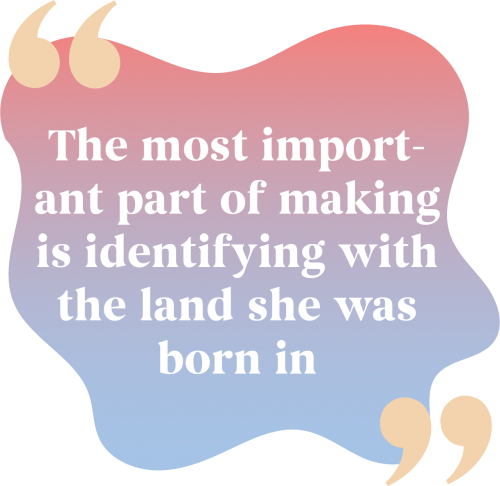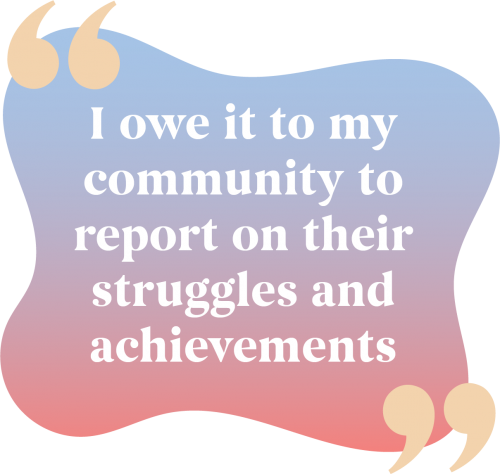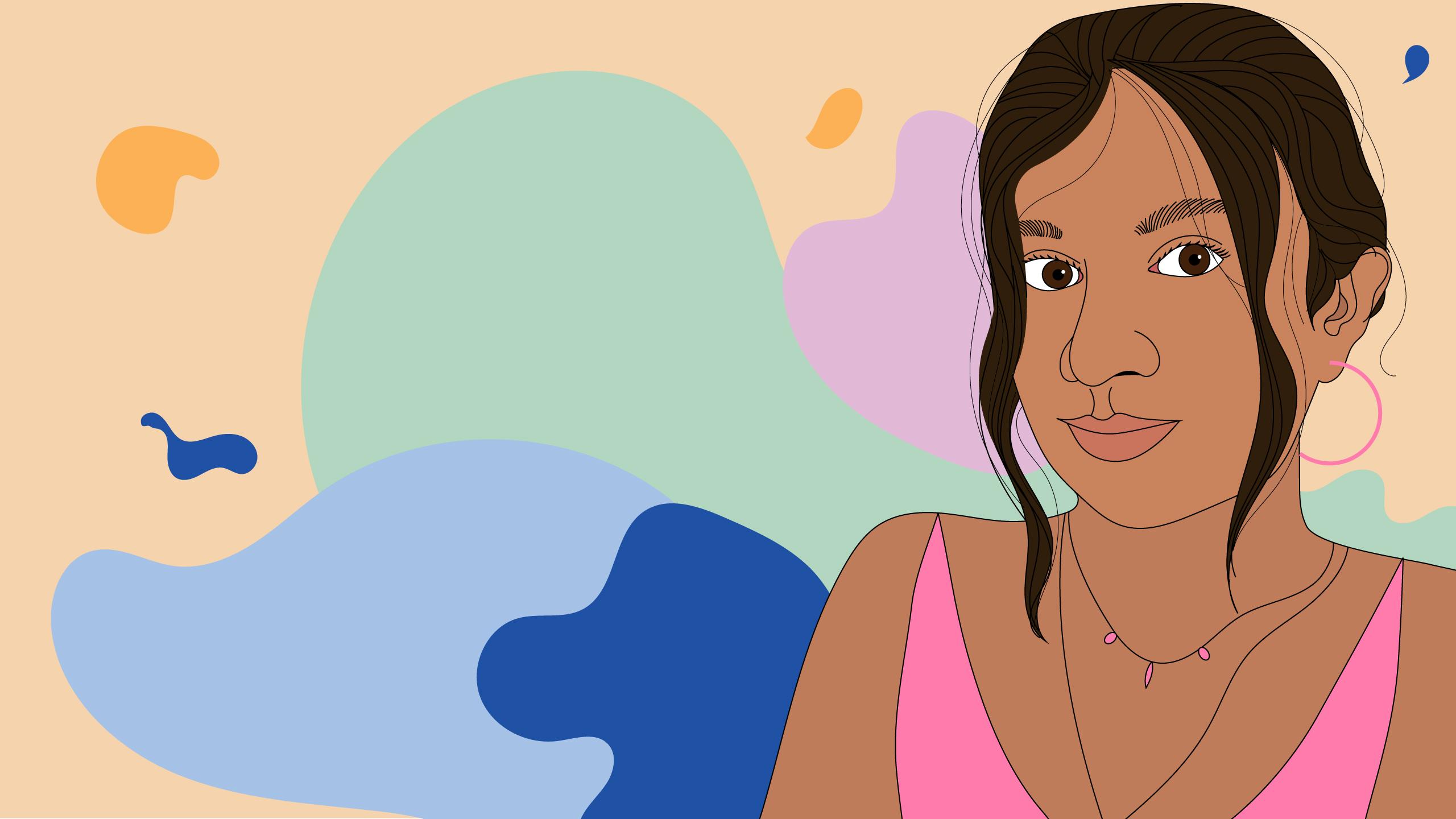For people of colour, our identities can be at odds with the world, but can also be our greatest strength
Words by Rhea Singh
Illustration by Pernia Jamshed
AS WE SAT in the kitchen at my friend Caitlin Mackavic’s Sweet 16 birthday party, we talked about things anyone would talk about in high school: upcoming exams, people we went to school with, overbearing parents. Eventually, we got to the topic of graduation. As a kid, I wanted to pursue a degree in fine art and by 15, I was set on graphic design. But a friend of Caitlin’s started talking about how she was going to pursue journalism at Boston University. We ended up talking about her future career for hours.
In my final two years of high school, I swapped my fine art course for a history course and piled on a French course to prepare myself. I researched how to structure features and news pieces to build my portfolio. I was going to make the switch to journalism. I eventually applied and was admitted to Ryerson’s journalism program in 2017.
Three years later, none of my art practices are in my life anymore. My canvas easel still sits in my parents’ garage, collecting dust and has been untouched since I was in Grade 9.
Once I got to Ryerson, and as time progressed, I got more overwhelmed and stressed about the degree I was pursuing, eventually feeling burnt out. I would constantly think whether or not this was the right program for me and if I was doing a good enough job compared to everyone else. For most of my first year, I felt as though I had made a mistake, and all those years of art in my life were flushed away just so I could get to Ryerson and feel lost.
I quickly learned that being a journalist of colour comes with an unspoken responsibility when reporting on marginalized communities—properly representing your community and proving you can make it through the trials and tribulations of being a person of colour (POC) in a predominately white industry.
These stressors agonize the feeling of wanting to give up. There’s an anxiousness that’s associated with how white reporters present your community and how you need to atone for the mistakes that others aren’t trained to fix. It makes you feel like you want to crash, hiding away to avoid these unspoken responsibilities.

But my burnout didn’t last forever. Eventually, I learned to take those factors that made me feel burnt out and use them to my advantage. I learned to love reporting on my community and to not only see it as a responsibility but a privilege as well. By embracing the platform that I have as a journalist, I can aim to produce a more accurate and in-depth story to be told that I wasn’t seeing in the media. This was also something I learned from Shree Paradkar.
In September 2019, Paradkar, a race and gender columnist at the Toronto Star, wrote about Maxime Bernier’s visit with The Star’s editorial board. A photo circulated on Twitter of Bernier meeting with the national news outlet’s all-white board made up of three men and one woman. Paradkar wrote about how the few journalists of colour in The Star newsroom had to deal with being let down by their own employers’ decision.
“We didn’t have the luxury of shrugging or rolling our eyes. Many of us had deadlines, yet we had to take on the emotionally exhausting task of organizing and speaking up to explain to our management why this impacted us so viscerally.”
The first piece I ever wrote was in my first year, and it was about having Polycystic Ovarian Syndrome (PCOS) as a South Asian woman. In the Indian community, having children and a family is an integral part of the culture that is drilled into you at a young age. With PCOS comes infertility, which can clash with the communities’ underlying expectations.
As Paradkar says in her opinion piece, she as a columnist has the privilege of voicing her concerns. When my piece came out in first year, there was a sense of empowerment I felt in teaching people the realities of communities of colour. As stressful as it may seem to write about these issues, it creates a conversation that people are scared to delve into.
With these kinds of discussions, you open doors for reporters of colour to eliminate burnout and create content they can be proud of. Having this drive allows for more accurate and empathic reporting in those communities while also opening doors for newsrooms to introduce training when reporting on marginalized groups.
Identity in any given industry that is predominantly white can be anxiety-inducing due to the pressure of properly representing your community—especially when no one else does. This exists for journalists like me, but it also exists in other industries like television and film, fashion, music and any other storytelling or expressive kind of work.
WWHEN IT COMES to being a POC artist, the narrative is very similar. For Rafa, her burnout doesn’t just stem from her art practices but from familial to financial responsibilities as well. This, she says, can make it hard to spend time in the art world itself.
“As an immigrant, I find myself trying to navigate between the values of community that I was taught growing up and the more western philosophy of individual growth,” she said.

But Rafa says this burnout doesn’t last forever and can be used to her advantage. For her, representing her identity through her art is her quiet revolution. As an artist, the fourth-year photography student says the most important part of making art is identifying with the land she was born in—the memories of her childhood and the stories of her people.
“I often feel unheard, unimportant [and] outnumbered in the art world, and creating a place for myself…makes me feel like I’m doing my part,” said Rafa.
In her art, there is a story of reconciliation. She said her identity will always be a part of her work, as it is a part of her existence.
“I am constantly going back and forth between my birthplace, trying to reconcile past and present me, trying to see different perspectives, how people live, what stories haven’t been told,” said Rafa.
Similarly to Paradkar, journalists across Canada are using the privilege and power they have to shift in conversation. Initiatives and groups have been created by journalists of colour themselves to combat these issues. Journalists for Human Rights (JHR) began an initiative called the North Ontario Initiative, working directly with Indigenous communities to accurately report on them. Additionally, the Asian American Journalist Association offers internship grants and scholarships to East and South Asian journalists, which can go up to USD $20,000.
Canadian Journalists of Colour—a Facebook group with over 600 members—allows for BIPOC journalists to have a supportive and safe environment to discuss story ideas and issues in the field, as well as helps young Black, Indigenous and POC journalists in navigating the industry. At Ryerson, “reporting on Indigenous issues” is a class offered for students in their third and fourth years, but the course remains optional.
Journalists of colour carry a heavy weight on their shoulders when it comes to representation, but the power we have as journalists enables us to do better by our communities and by ourselves.
Overcoming my burnout is something that took me a while to do, but once I did, I changed my whole perspective of reporting on my community. I don’t feel as though I owe it to my community to report on their struggles and achievements—I want to.











Leave a Reply